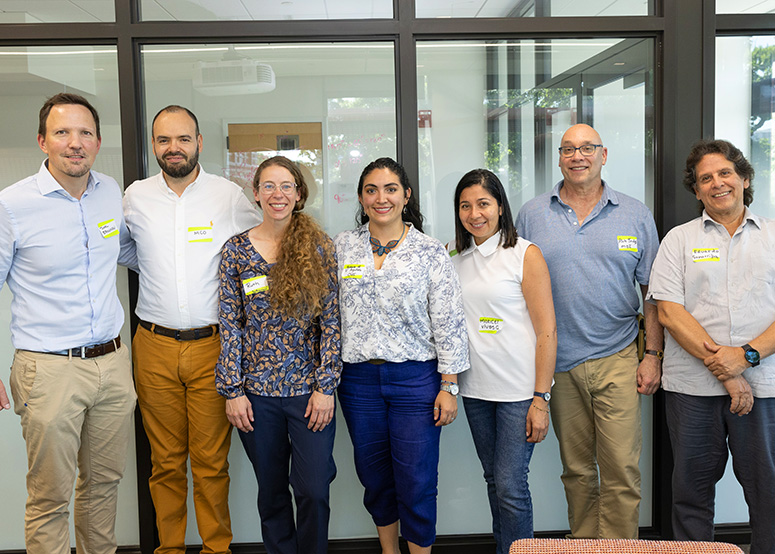


The Mesoamerican Development Institute (MDI), proponent of the Yoro Biological Corridor (YBC), was invited to take part in Yale University’s “Coffee & Carbon” workshop last month. The public event took place at the Yale University campus on September 7-8, and brought together coffee industry leaders and the most advanced strategies to address coffee’s unchecked and growing carbon footprint.
The timing of the workshop was significant in light of the new and controversial EU Deforestation laws, which require all EU coffee imports to prove they are not responsible for any deforestation. The main purpose of the Yale workshop was to exchange ideas; discuss what industry actors are doing; and discuss what conditions would enable natural carbon capture to become a working reality.
Summary of the the Presentations:
Among the presentations, there were two different carbon trading programs based on coffee system to compare:
- Mesoamerican Development Institute’s (MDI) Yoro Model, which is being prepared for scale-up in the Yoro Biological Corridor; Requires coffee producers to actively restore forest on their lands and that the coffee is processed with renewable energy instead of the burning of firewood (accounting for the original clearing of the forest land in order to farm coffee, the carbon leakage due to mechanized wood/fossil fuel powered coffee dyers, and the ongoing negative impacts of coffee farming on soils and biodiversity).
- Solidaridad’s model, in partnership with Conservation International and Rainforest Alliance; Is based on the idea that as long as the coffee cultivation is practiced on previously degraded land (deforested up to 20 years ago) it is eligible for carbon credit generation by measuring the amount of carbon that is sequestered by the coffee plants and surrounding shade trees.
From Our Perspective
Over the course of more than two decades of continuous research, what YBC researchers have learned is that coffee cultivation replaces high elevation tropical forest. We also know that these high elevation forests adjacent to national parks and cloud forest are biodiversity hotspots providing forest habitat for preservation of wildlife and watersheds. As this forest habitat is lost to current business-as-usual coffee cultivation, the local communities and cities and towns downstream are impacted by erosion and loss of water resources.

With the Yoro Model, forest habitat is restored and maintained on coffee farms, sequestering carbon to mitigate climate change, maintaining healthy watersheds, and providing jobs for local youth in operating processing factories powered by renewable energy as well as in monitoring and mapping farms to validate carbon accounting.
Furthermore, it is not really possible for any productive, cultivated coffee plant to be a carbon sink (a.k.a. sequester more than it emits). This is because when you account for the many parts that comprise its footprint (starting with the clearing of forest to grow coffee, the tilling of soil, the loss of biodiversity and moisture, inputs to grow coffee, and the energy it take to process the coffee once picked)—All of these added up give off more carbon emissions than a coffee plant sequesters. The only coffee plants that could potentially qualify as being able to sequester more carbon than they emit, would be wild coffee growing in Ethiopia.
Follow Up
A white paper of conclusions following this event and at least one comment article published in a peer-reviewed paper is planned as the follow-up to this workshop.